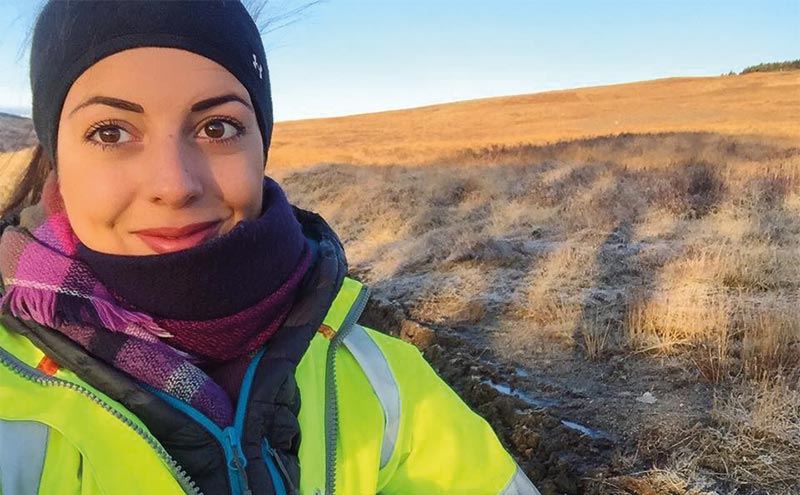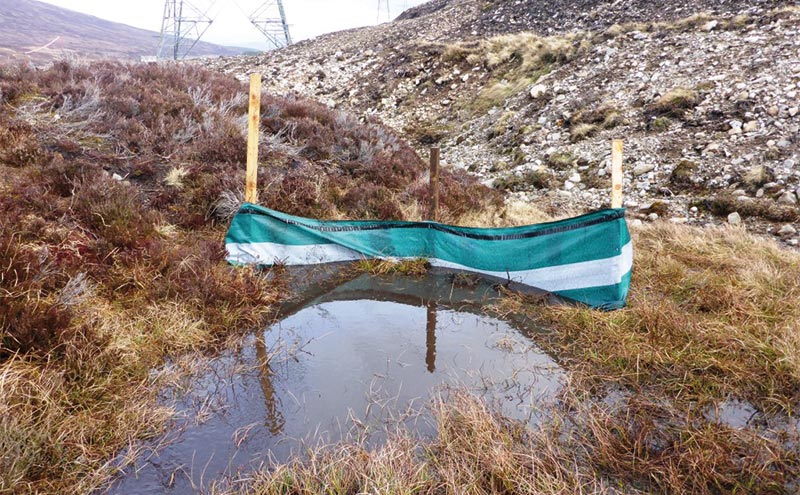
Donya Davidson, a consultant ecologist at EnviroCentre, tells Project Scotland about the increasingly important role of Ecological Clerk of Works as the construction sector moves towards a greener and more sustainable future
ECOLOGICAL Clerks of Works (ECoWs) are having an ever increasing presence on construction sites across the country, however the role is still somewhat misunderstood. The recent surge in ECoW presence is largely due to increased legal protection of wildlife and the environment, which is the result of the negligent practices of the past, and the associated detrimental effects that construction projects can have on ecology, if not managed correctly.
Contrary to a fairly popular belief, ECoWs are not a group of tree huggers trying to slow down or stop the development, they are in fact, quite the opposite. According to the Association of Environmental and Ecological Clerks of Works (AEECoW), an ECoW is ‘An environmental or construction professional with direct responsibility for advising and monitoring compliance with environmental legislation, policy or mitigation’.
But what does this actually mean? In essence, the role of the ECoW is to assess the ecological and/or environmental constraints within the site, combine this information with the applicable legislation, and provide the site with appropriate mitigation measures to facilitate the work. All of this is to be done whilst keeping the construction workers within the law, and protecting and/or conserving the environment. For Transport Scotland projects the requirement for an ECoW is usually outlined in a Multi-Framework Agreement (MFA) and for other development projects it is often required to discharge a planning condition.

Ecological constraints facing the development can vary from site to site, with differing levels of protection and associated mitigation required. Protected species are one of the most common constraints and can range from species of Scottish importance such as Orkney vole, to those of national protection such as badgers and water vole, to even those of European level of protection such as otter, bat species, wildcat and great crested newt.
On top of this, all reptile species in the UK are protected, and during the bird breeding season, all nesting birds are protected. The water environment is another notable constraint that faces most construction sites. According to the Scottish Environment Protection Agency (SEPA), the water environment includes rivers, streams/burns, lakes/lochs, loughs, reservoirs, ponds, canals, estuaries, coastal waters, groundwater and even dry ditches. Most construction sites will encounter at least one of these constraints and will require some form of mitigation to work in relation to them. Other constraints include, but are not limited to, designated sites (Sites of Special Scientific Interest and European designated sites), invasive non-native species, and ancient woodland.
The list of ecological and environmental constraints is vast and sometimes very confusing, but luckily for those within the construction industry, there are specially qualified people to deal with these furry, feathery and watery problems.
The overarching goal of the ECoW is to translate this information into practical solutions on the ground. They will start by identifying the constraint and assessing where it is in relation to the development. Depending on the requirements of the project, the mitigation can then include micro-siting the works away from the constraint, setting up exclusion zones to avoid disturbance of the constraint, installing silt fencing to avoid pollution, giving toolbox talks to site staff to make them aware of constraints, conducting watching briefs and supervising works and/or vegetation removal, and applying for licences to disturb or even translocate certain constraints (namely protected species).

The bottom line is, no matter what the constraint, there is always a solution to facilitate the work whilst still remaining within the law and protecting the environment.
Having the correct environmental mitigation measures in place is one thing, but actually following those measures on site is another. Failure to implement mitigation measures and protect environmental receptors can cost a project financially and be damaging to the reputation of the contractor. Financial costs can arise directly from fines, court convictions and/or imprisonment, or indirectly through the costs of standing time and delays to the project. For example, a road building contractor was recently fined £280,000 by SEPA for polluting the River Dee and the River Don in the northeast of Scotland, the former of which is a Special Area of Conservation (SAC). Environmental convictions can also preclude companies from bidding for future tenders and frameworks, and the resulting damage to their reputation from negative publicity can be substantial. All of this, however, can be easily avoided by appointing an appropriately qualified ECoW at the project outset and following the advice and solutions that they provide.
Given the current boom of ambitious infrastructure projects in Scotland and the move towards greener and more sustainable practices, the role of ECoW is only set to increase in the future. Increasing good practice within the sector and a change in the perception of the role from “obstructive” to “facilitative” will be crucial to deliver these goals in the upcoming years.








